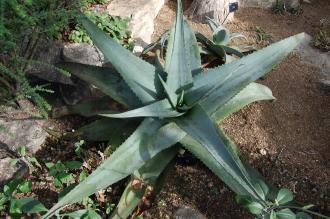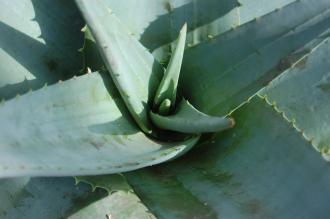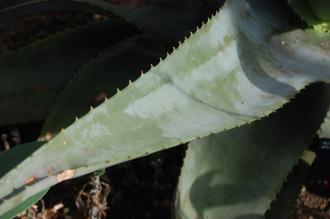
Aloe rivae (28/02/2016, Kew Gardens, London)
Position: Full sun to light shade
Flowering period: Spring
Soil: Moist, well drained
Eventual Height: 70cm
Eventual Spread: 70cm
Hardiness: 9b, 10a, 10b, 11
Family: Xanthorrhoeaceae
Sub Family: Asphodeloideae
Aloe rivae is an evergreen perennial with a rosette forming habit. Its mid green fleshy leaves are triangular with toothed margins, up to 50cm long, 8cm across at their base and arranged spirally. Its pale red flowers appear on branched flower stalks which are 60cm across and 60cm tall.

Aloe rivae Crown (28/02/2016, Kew Gardens, London)
Aloe rivae, commonly known as Aloe, is native to east Africa including Kenya ans Ethiopia. In its native habitat it grows in open wooded grassland on rock slopes.
The etymological root of the binomial name Aloe is derived from the Semetic alloeh a name for this genus. Rivae is named after Domenico Riva (1856 – 1895), an Italian botanist.
The landscape architect may find Aloe rivae useful as a suitable specimen plant in a rock or desert garden setting. Its is also suitable for growing as a house plant, suitable for bright conditions.
Ecologically, Aloe rivae are of little value to UK wildlife.

Aloe rivae Leaf (28/02/2016, Kew Gardens, London)
Aloe rivae prefers moist, well-drained soils. It tolerates most pH of soil.
When maintaining Aloe rivae as a houseplant its soil should be watered regularly. Watering should be reduced during the winter months. Its preferred active growing temperature rages from between 18ºc to 28ºc, although it will tolerate a temperature as low as near freezing. Feeding with weak fertiliser solution should be carried out once a month during the growing season. Cuttings may be taken from sprawling plants, placed in moist sand for a couple for weeks, during which period they will root.

Landscape Architecture

